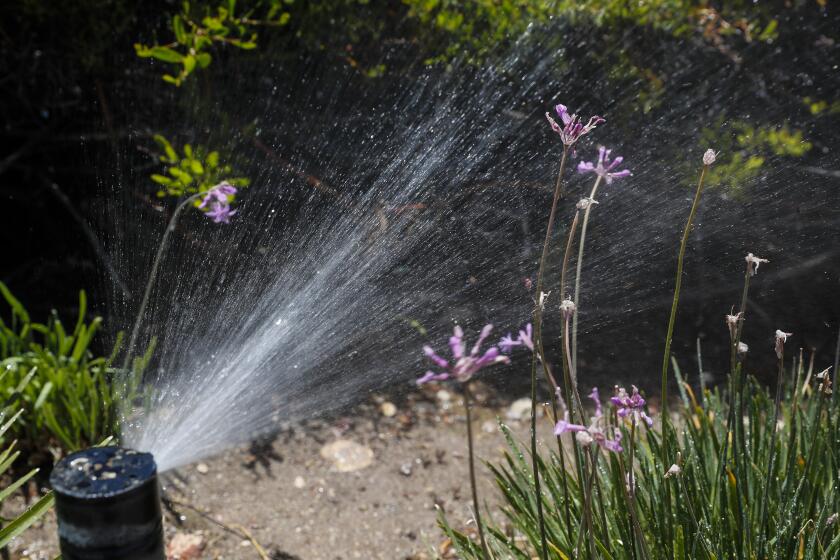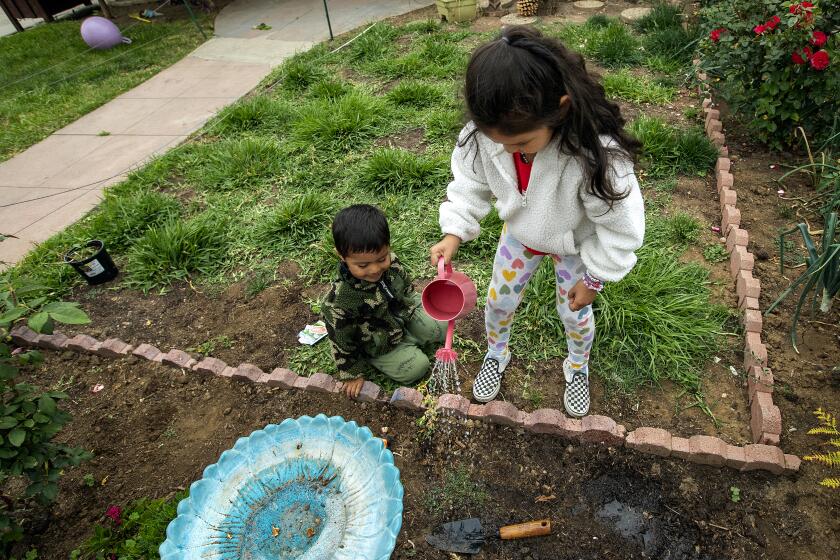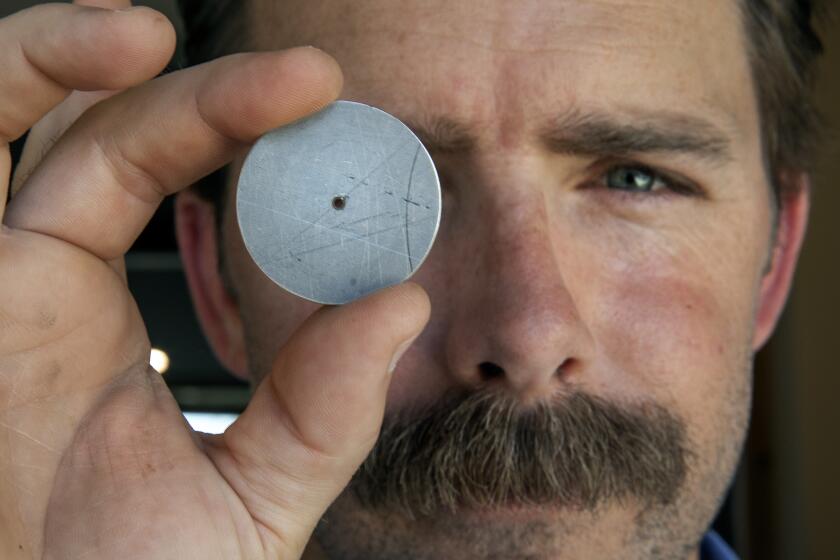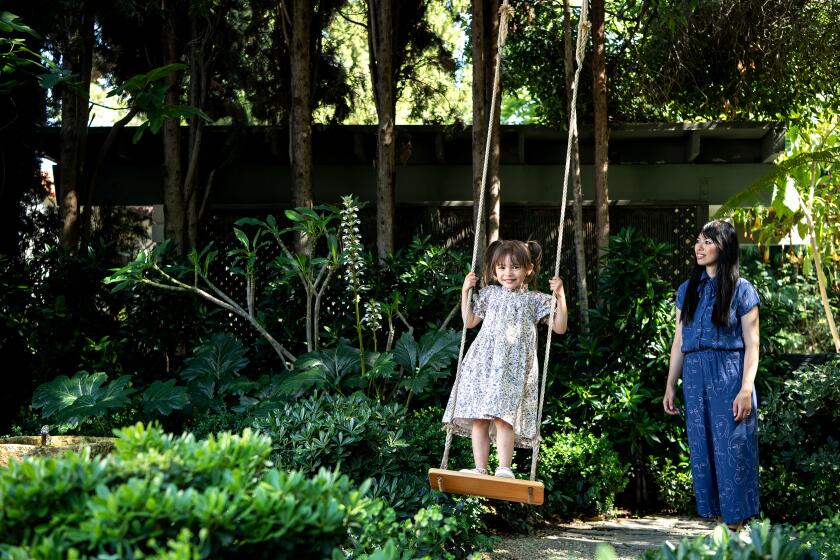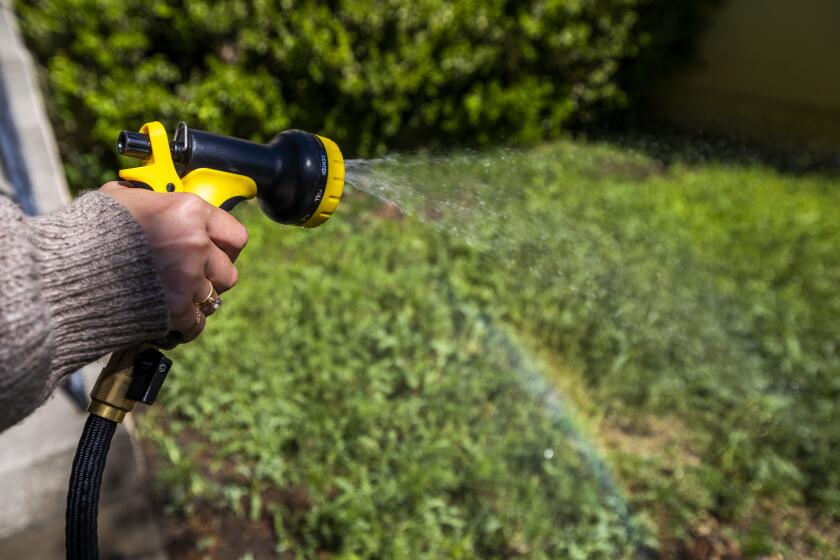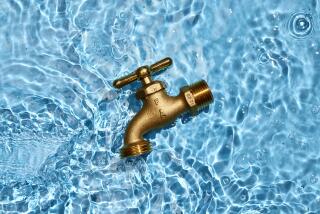Take five minutes right now to check for leaks. You’ll save water in the drought (and money)
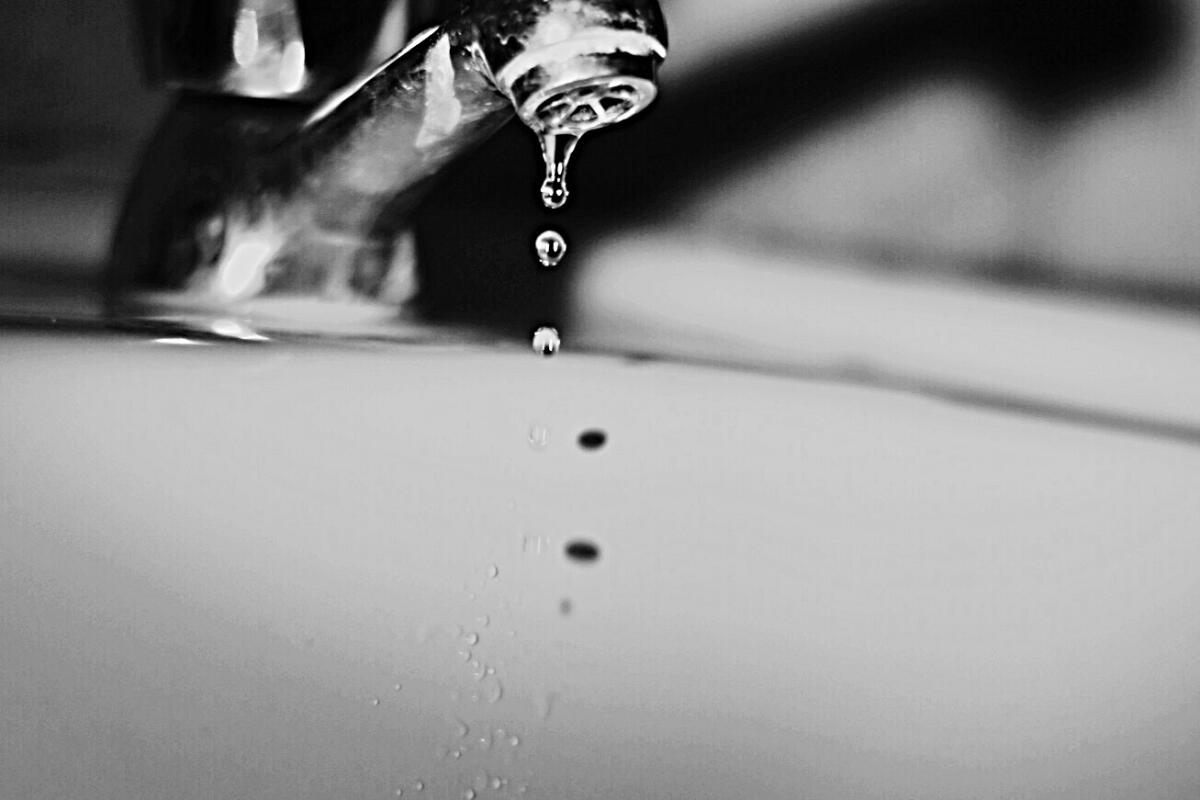
- Share via
You’ve limited your outdoor watering, you’ve cut shower time, and you’ve stopped pre-rinsing dishes.
As Angelenos continue adapting to another year of drought and California’s latest water restrictions, you might be wondering what else you can do to conserve water.
A big water waster is leaks. Fixing a leak not only saves water, it also saves you money on your water bill.
There are three ways you can inspect your home for leaks, including checking your water bill, checking your water meter, and doing an inspection inside and outside your home. Here’s how.
Become a leak detective
You’ll want to start this investigation with your water bill. Check it for irregularities in water usage.
For example, you can compare your water usage from this spring to the spring of 2021. If there is more water usage that doesn’t have a reason behind it, such as someone moving back home, then there could be a leak, said Terrence McCarthy, the Los Angeles Department of Water and Power’s manager of water resources policy.
Another way to detect a leak, and the easiest way, McCarthy said, is to check your water meter.
The meter is in a concrete box typically at the front of your property near the curb or sidewalk. It’s labeled “water meter” and its cover can be pried open with a screwdriver.
There are two types of meters: analog and digital. The analog meter has a “sweep hand” (similar to a clock) and a low flow leak indicator in the shape of a star or triangle.
If you turn off all water-using devices inside and outside the home, including the irrigation system, and the indicator spins, that means water is still flowing and there is a leak somewhere. A digital meter will have an icon that appears when there’s a leak, or the water usage display number will continue to rise.
“That’s the clearest and best way to tell if you have a water leak,” he said.
Here are 10 things to consider as the new restrictions — most notably limiting outdoor watering to one or two days a week — set in.
Indoor leaks
If you’ve determined you have a leak, start your search in the bathroom (but don’t forget the kitchen).
McCarthy said many people may have a toilet leak but never know it’s happening.
“The sound of the toilet is very faint, and if you don’t catch it right when it happens it’s kind of like one of those white noise things that’s happening in the background and you kind of assume everything is OK,” he said.
According to the LADWP, a running toilet could waste about 150 gallons of water or more every day.
That’s more than double the average residential use of 72 gallons a day, said Ellen Cheng, DWP’s media relations manager.
To check if your toilet is the culprit, the DWP offers free dye tablets that go in the toilet tank. Once the tablet is in the tank, wait 10 to 15 minutes and check the toilet bowl for color — color indicates a leak. For free tablets call (800) 544-4498 and press 5 or send an email to [email protected]. You can also do this test with food coloring.
Sometimes you can hear a leaking faucet, shower head or tub.
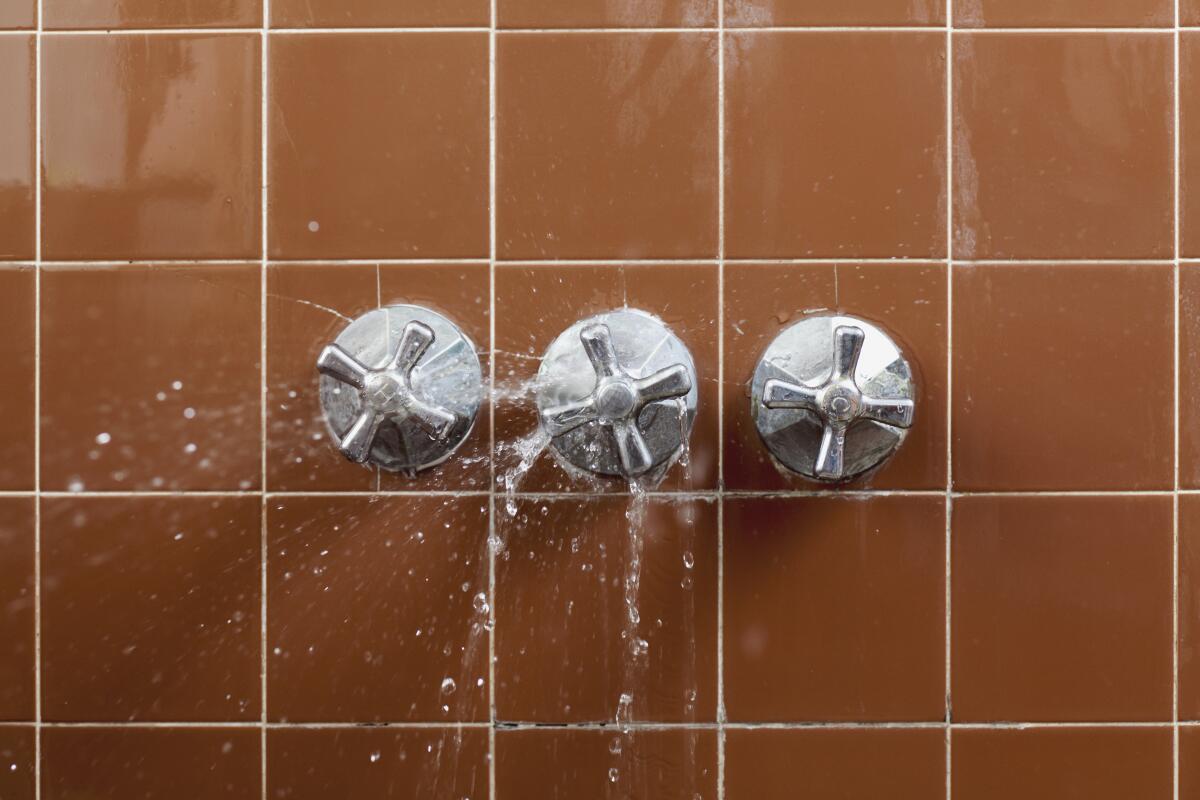
“Just reach your Zen state, and you’ll hear that background-like white noise sound of water flowing,” McCarthy said.
For example, he said, when we’re done showering, most of us expect a little bit of water to keep dripping from the shower head when we turn the water off. But if water continues to drip for hours or all day, the shower head is leaking.
No one likes to be nagged. Here’s how games can help you persuade your kids to take shorter showers.
Outdoor leaks
Even though Angelenos are limiting use of irrigation systems, most people still run them in the early morning or late evening. So you might miss seeing a broken or leaky sprinkler head.
“Everybody just assumes [the sprinkler] goes off and it’s perfect,” McCarthy said. “But just driving through the neighborhood, I’ve seen ... a lot of people have leaky sprinkler heads that waste a ton of water.”
You can check by briefly turning on the irrigation system and inspecting each sprinkler head.
You’ll also want to check your irrigation control valves, which are constantly under a lot of pressure and can leak. If the irrigation system is turned off and there’s a puddle of water or the soil is wet near the valve, that could indicate a leak.
Under your landscape or turf are the pipes that carry water through your irrigation system. One way to recognize an underground leak is any area where pools form, areas that are greener than the rest of the landscape, or where grass grows faster.
In one wealthy Los Angeles County enclave, 70% of water is used outdoors. Officials hope to curb chronic overuse with these custom flow restrictors.
Need help?
You can conduct these inspections yourself, or you can get help from Los Angeles County Public Works.
The public works department offers a free water audit of your home — sending out a consultant to perform a comprehensive indoor water review and leak check of toilets, sinks, showers, dishwashers, clothes washers and irrigation systems.
The expert consultant will then provide a detailed report, with information on usage per indoor device, a summary of irrigation equipment, leaks, if any, a suggested irrigation schedule, and recommendations on how to reduce overall water use, Los Angeles Public Works spokesman Steven Frasher said.
The audit takes one to two hours to complete, and customers are encouraged to accompany the consultant.
“Don’t worry about hovering! The consultant recommends that customers walk around with them and ask questions,” Frasher said.
You don’t need grass for a family-friendly yard. Garden designer Paul Robbins traded turf for a drought-tolerant garden and play area for his kids.
Repairs and preventative action
When you’ve identified a leak and the source of it, reach out for help from your handy family member or phone a plumber.
If you have to replace a shower head or a toilet for a more efficient one, check the LADWP website for incentives, rebates or free devices. For example if you need to replace a faucet aerator or a shower head, email [email protected] and include your name, address, number and types of devices you need. The devices will be mailed to you.
LADWP provides an incentive for inline leak detection or home water-use monitoring systems. (This is when a plumber installs a device that can alert your smartphone if it detects a leak.)
The department is also working on a home leak detection system, set to release in coming months. It will be a device you can strap to your meter and connect to your home WiFi. The device will send you alerts when it detects a leak; it also identifies different types of indoor and outdoor usage.
“So it gives you a better feel for when your water is being used and if you’re using too much here versus there,” McCarthy said.
L.A. Times readers share how they are conserving water in California amid drought restrictions.
About The Times Utility Journalism Team
This article is from The Times’ Utility Journalism Team. Our mission is to be essential to the lives of Southern Californians by publishing information that solves problems, answers questions and helps with decision making. We serve audiences in and around Los Angeles — including current Times subscribers and diverse communities that haven’t historically had their needs met by our coverage.
How can we be useful to you and your community? Email utility (at) latimes.com or one of our journalists: Jon Healey, Ada Tseng, Jessica Roy and Karen Garcia.
